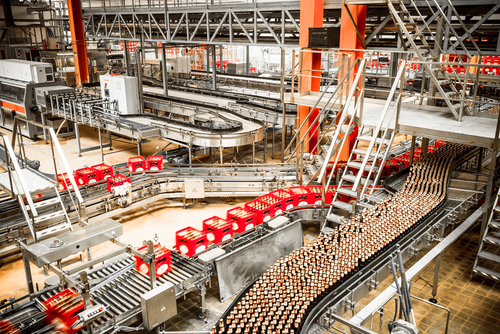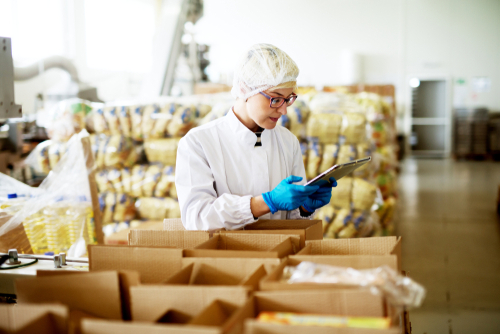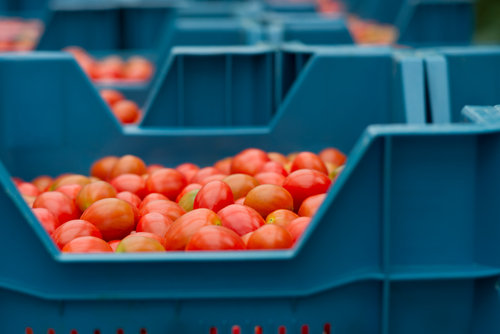Managing a food bank warehouse isn’t the same as running a traditional warehouse. Instead of sorting, shipping and storing consumer products at room temperature, your products have a shelf life, which means timing is everything. Food products also tend to be more sensitive than traditional consumer goods, so you and your team need to use caution when handling and storing your products.
Manufacturers in the food storage business often seek out storage containers and products that are made of lightweight, high-performing polycarbonate plastic that’s also resistant to shattering and heat. Learn more about the best containers and racks for food storage so you can store and deliver your goods without damaging your inventory.
Stack Racks
Stack racks are the ideal choice for any storage facility. They allow you to make the most of your storage space without putting your inventory in jeopardy. These racks are typically bolted to the ground, which reinforces the structural integrity of your storage facility. Before you lay down and install your stack racks, optimize the layout of your facility for maximum productivity. Keep the heaviest items at the bottom, clearly label all your shelves and make sure your workers can move freely throughout the facility.
Bakery Trays
Bakery trays are designed specifically for food storage. These open-air racks give your products a chance to cool down after they’ve come out of the oven. But bakery trays aren’t just for bakeries. They’re the perfect storage solution for all kinds of food products, particularly fragile, sticky and decorative items or those that need plenty of space. You can easily separate your products instead of tossing them into the same bin so your goods won’t get crushed or damaged in the process.
To make the most of your storage space, stack your bakery trays to get more products out of the way without taking up precious real estate. Your staff can easily reach for what they need without having to sort through large containers, which simplifies the item retrieval process.
Plastic Totes
If you need to place food products directly into a container, plastic totes are just what you’ve been looking for. These compact food-grade containers are designed to store and ship all kinds of food products, including produce and dry goods. The plastic keeps your items safe during travel so you can rest assured they will arrive intact. They’re also resistant to heat, everyday wear and tear and even moisture.
Plastic totes are also easy to pack up and store when they’re not in use. They slide into each other so you can stack them up in the corner in between orders. They’re also completely reusable, which helps you limit your storage costs. You can quickly clean them in between deliveries, making them good to go as soon as another order comes in the door.
Industrial Storage Bins
If you need to store a lot of food products at once, industrial storage bins will make your life much easier. When you purchase industrial storage bins, you can simplify the storage and delivery process by keeping hundreds of items in the same container. You won’t have to worry about handling dozens of containers at a time, which helps you get orders out the door and to your customers as quickly as possible.
They’re perfect for bulk orders and food suppliers, but you can also use these massive containers to keep your warehouse organized. You can quickly sort and process incoming orders and deliveries without having to keep track of lots of different containers.
Just like plastic totes, industrial storage bins were designed to withstand all kinds of hazards. They will hold up against everyday wear and tear without damaging the products inside. You can streamline your entire operation without putting your inventory at risk.
Insulated Storage Containers
You’ll also need insulated or refrigerated storage containers if your food products need to stay a certain temperature. These containers come in all shapes and sizes, enabling you to arrange and store your food products as you see fit. With temperature tracking technology, you can also monitor the temperature of these containers while they’re in your facility or as they make their way to their final destination. If some of your products get too warm, you can quickly address the problem to minimize your losses.
Use these containers to improve storage conditions at your food bank.


